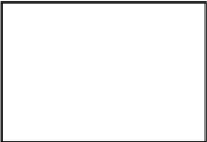Game Development Reference
In-Depth Information
The Ratios of Trigonometry
A set of functions, known as the trigonometric functions, allow you to extend the
work of algebra and geometry in several directions. To understand the trigo-
nometric functions, you can start by examining the ratios that exist between the
angles and sides of a right triangle. To explore how these ratios are related to
the activities previous chapters discussed, you can begin with an examination of
the right triangle and how it relates to a line you generate using a linear equation.
Angles and Sides
Two of the angles of a right triangle are acute angles. In other words, they are
angles of less than 90
. One is usually labeled as angle A. The other is labeled as
angle B. A third angle is equal to 90
8
8
. According to the standard way of depicting
a right triangle, the 90
angle is labeled as C. Likewise, a small square tucked into
the angle identifies angle C as a right angle (see Figure 12.1).
8
The line opposite angle A is line BC. It is called the opposite side. You can
designate the length of this line using the letter
a
. The line opposite to angle B is
called the adjacent side. It is adjacent to angle A. You can designate its length with
the letter
b
.
Opposite the right angle is the hypotenuse of the triangle. This side of the right
triangle is always the longest side of the triangle. You can refer to it geometrically
as line AB. You can also designate the length of this side using the letter
c
.
Figure 12.1
Identify angles and lines of a right triangle in a standard way.





















